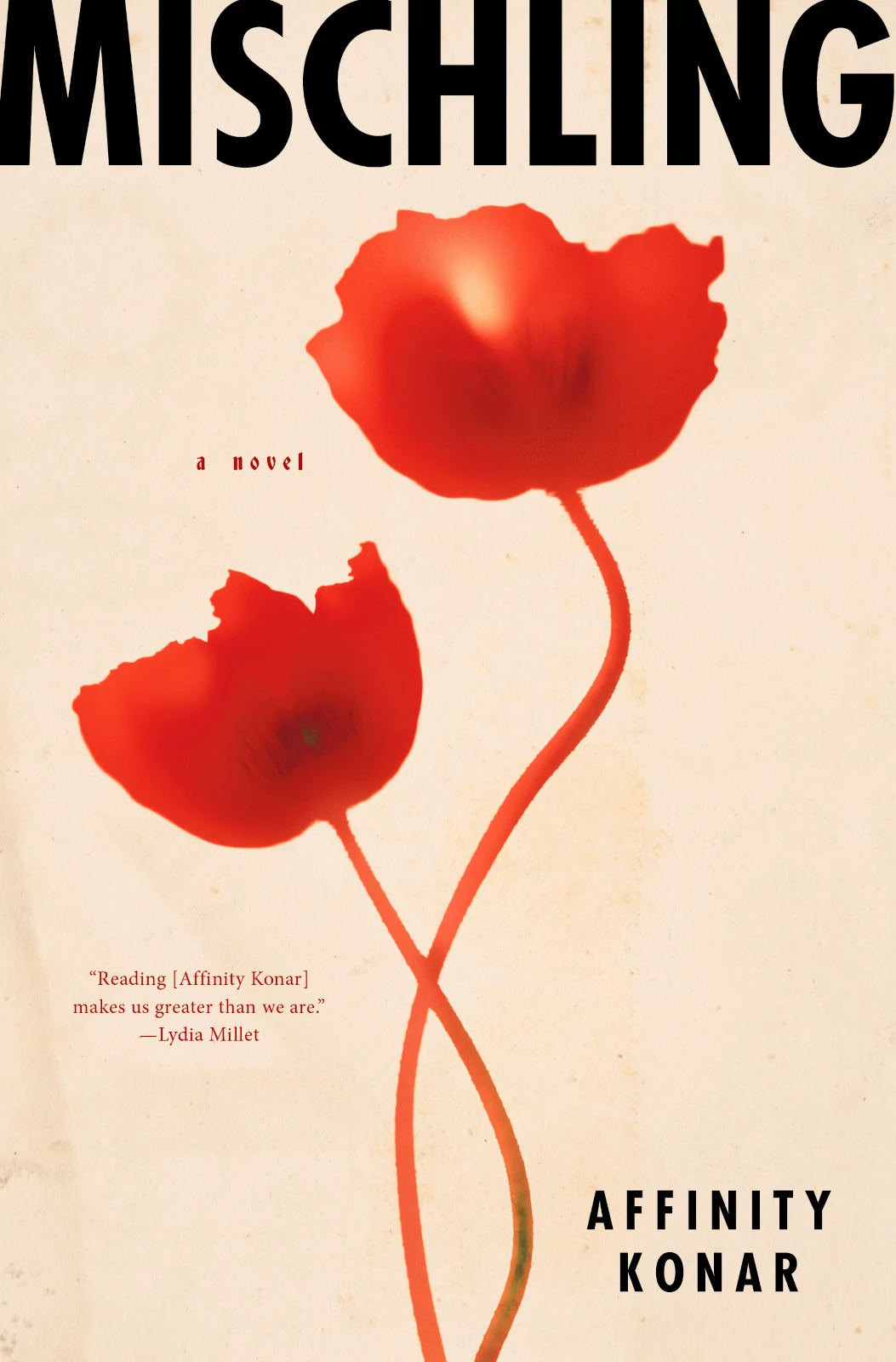
Mischling, by Affinity Konar
Words By Helen Maimaris
Affinity Konar’s debut novel, Mischling, opens with one of the most linguistically visceral and perfectly sculpted paragraphs that I’ve ever read. We start in the rosy warmth of the womb, where twins Pearl and Stasha have been afloat in “amniotic snowfall” for eight months. In a few sentences, we trace through the imagery of their development, the construction of their beings, until the bold, spirited moment of their birth.
Stasha is the narrator of this first chapter, our immediate perspective into the twins’ monozygotic and fluid consciousness. Within the first page, Konar has Stasha swoop us, expertly and with the same mythic, precise and sensory language, through birth, their early childhood and intense connection, up to the moment that they are huddled in the back of a cattle car with their mother and grandfather, travelling toward the Nazi concentration camp of Auschwitz.
Upon arrival, the twelve-year-old twins are spotted and handed over to “Uncle Doctor.” This white-coated physician, the billowing fabric of his sleeves like wings of an angel, is the infamous Josef Mengele. The twins are an addition to his “zoo,” which comprises a collection of thousands of twins, triplets, Lilliputs, “Jews he’d deemed curiously Aryan in appearance” and other such “genetic mutation(s)” upon whom he enacts his medical experiments.
The narrative shifts back and forth, chapter by chapter, between the perspectives of Stasha and Pearl, as they are injected, examined, experimented upon, and changed. Their experience is as much a psychological one as it is physiological, felt through the erosion and distortion of their once defining unity.
Central to the power and effect of this novel is Konar’s decision to convey the heartbreak of Auschwitz through the emotional lives of the twins. The evil that the twins encounter and endure, the hardship that pushes them to the brink of survival, is rendered in language lyrical and sensitive—fairytale-esque.
When Stasha stumbles into a room in the laboratory where rows of human eyes are pinned to the wall, Konar conveys Stasha’s horror and disgust through her childlike focus on the “silvery winks of pins [that] assured their captivity”—her observation that the eyes are “colored like a pretty season: green and hazel and brown and ocher.” As Stasha conceptualizes the onward journey of the samples taken from them, materials extracted in violence that turn the twins into mere experiments, Konar’s choice of language has movement, light and color: Stasha imagines the samples “colored with dye and placed between slides, set to whorl and fluoresce,” wondering “if the pieces hated themselves for their participation in the experiments.”
Similarly, when Pearl contemplates the fate of two Roma boys, sewn back to back, who “lived as a single entity for three days,” the horror of the situation is in stark contrast to the gentle, ethereal, loving moment that Konar creates in Pearl’s thoughts: “I wondered if the Roma twins died at the same moment, or if life, as it left them, had allowed one to ease the way for the other.”
As the story moves through Auschwitz and beyond, into the territories of revenge and forgiveness, it is through Konar’s creative ambition, her choice to use sensitive, beautiful language, that makes reading this novel—though intensely painful and disruptive to our understanding of humanity—a touching, transformative experience.